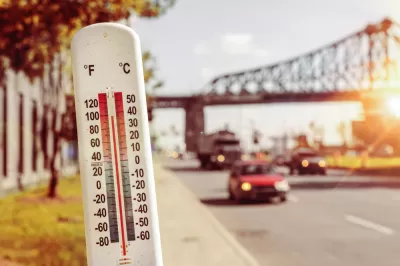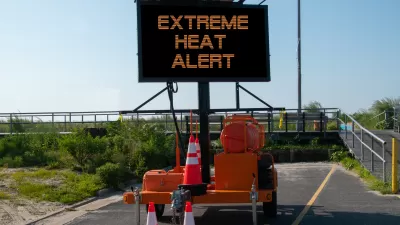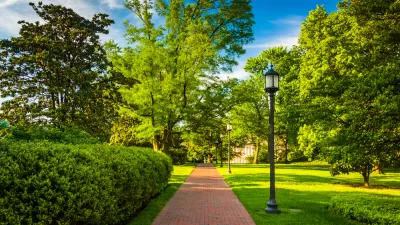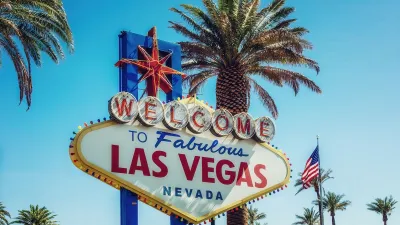Cities can take action to improve conditions during extreme heat events and prevent heat-related deaths, many of which occur in low-income communities.

As cities grow, so does their potential to generate heat, writes Matt Simon. “A city’s roads, buildings, and other infrastructure absorb the sun’s energy, raising temperatures far above those in surrounding rural areas.”
Combined with climate change, this “hyperlocal and erratic” effect, which can vary widely even from house to house, is making it “increasingly difficult to keep vulnerable (and rapidly growing) populations safe during extreme heat events.” As Simon points out, “For example, different kinds of building materials, like brick or wood, absorb and release heat differently. And tall buildings block winds that would otherwise cool a landscape.” Additionally, “This is a problem that doesn’t end when the sun goes down, because the built environment slowly releases its warmth throughout the night, keeping temperatures high.” And “Low-income neighborhoods have it worse, as apartments often lack AC to bring cool air in and proper insulation to keep warm air out. These neighborhoods also have less tree cover, which in richer neighborhoods helps attenuate the heat.”
Edith de Guzman, director and cofounder of the Los Angeles Urban Cooling Collaborative and her colleagues used simulations to assess how heat mitigation measures could improve outcomes in Los Angeles. “They found that making simple tweaks to the built environment, primarily adding trees and painting roofs light colors, would save one in four lives that would normally be lost to heat events.”
Simon asserts that “Perhaps it's time to think of heat as a treatable disease that affects a city, not just its people. Working with community leaders, cities like LA can develop more green spaces, for example,” and implement other strategies to help save lives during the heat waves that are becoming more and more common.
FULL STORY: Extreme Heat Is a Disease for Cities. Treat It That Way

Alabama: Trump Terminates Settlements for Black Communities Harmed By Raw Sewage
Trump deemed the landmark civil rights agreement “illegal DEI and environmental justice policy.”

Planetizen Federal Action Tracker
A weekly monitor of how Trump’s orders and actions are impacting planners and planning in America.

How Atlanta Built 7,000 Housing Units in 3 Years
The city’s comprehensive, neighborhood-focused housing strategy focuses on identifying properties and land that can be repurposed for housing and encouraging development in underserved neighborhoods.

In Both Crashes and Crime, Public Transportation is Far Safer than Driving
Contrary to popular assumptions, public transportation has far lower crash and crime rates than automobile travel. For safer communities, improve and encourage transit travel.

Report: Zoning Reforms Should Complement Nashville’s Ambitious Transit Plan
Without reform, restrictive zoning codes will limit the impact of the city’s planned transit expansion and could exclude some of the residents who depend on transit the most.

Judge Orders Release of Frozen IRA, IIJA Funding
The decision is a victory for environmental groups who charged that freezing funds for critical infrastructure and disaster response programs caused “real and irreparable harm” to communities.
Urban Design for Planners 1: Software Tools
This six-course series explores essential urban design concepts using open source software and equips planners with the tools they need to participate fully in the urban design process.
Planning for Universal Design
Learn the tools for implementing Universal Design in planning regulations.
Jessamine County Fiscal Court
Caltrans
Institute for Housing and Urban Development Studies (IHS)
City of Grandview
Harvard GSD Executive Education
Toledo-Lucas County Plan Commissions
Salt Lake City
NYU Wagner Graduate School of Public Service





























